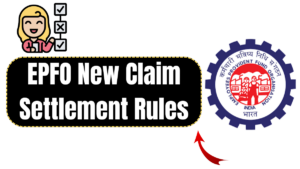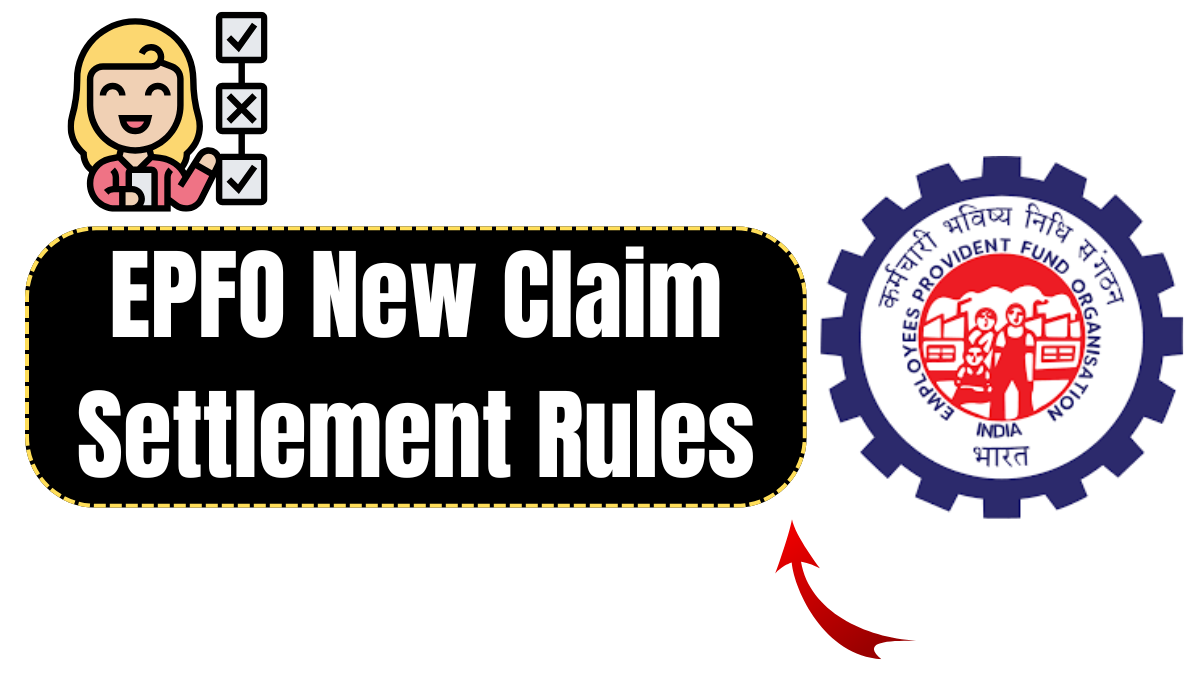As the financial year 2025–26 begins, the Employees’ Provident Fund Organisation (EPFO) has introduced several improvements aimed at streamlining the PF claim settlement process. These changes, announced by Union Minister of State for Labour and Employment, Shobha Karandlaje, in a Rajya Sabha reply, aim to make the system more digital, faster, and employee-friendly. Here’s a detailed look at the major enhancements now in effect from April 1, 2025.

Enhanced Auto-Claim Settlements up to ₹1 Lakh
To accelerate processing, EPFO has increased the limit for automatic settlement of advance claims to ₹1 lakh. This feature, earlier available only for illness or hospitalisation claims, now extends to advance withdrawals for housing, education, and marriage as well.
Currently, 60% of all advance claims are processed in auto mode, with an impressive turnaround of just three days. By March 6, 2025, EPFO had already processed 2.16 crore claims under auto mode—up from 89.52 lakh in the previous financial year.
Self-Correction of Member Details with Aadhaar-Linked UAN
One of the most employee-centric updates is the ability to self-correct personal details. Members with Aadhaar-verified Universal Account Numbers (UANs) can now directly make necessary corrections without intervention from the EPFO office. Presently, around 96% of such corrections are completed independently by users.
PF Transfers Now Possible Without Employer Attestation
Members transferring PF accounts no longer require employer attestation if their UANs are Aadhaar verified. Only 10% of PF transfer claims now need both member and employer signatures, making the entire process less dependent on employer actions.
Cheque Leaf Submission No Longer Mandatory
In a move to reduce paperwork, members with KYC-compliant UANs are now exempt from submitting a cheque leaf when filing claims. This eliminates another hurdle in the PF claim process and contributes to a seamless digital experience.
Real-Time Validation to Prevent Ineligible Claims
To further simplify processes, EPFO has introduced automated checks that help members understand whether they are eligible to file a claim. This proactive validation prevents the submission of ineligible claims and enhances the accuracy of the system.
Over 99% Claims Now Online and Centralised
EPFO’s shift toward digital transformation is evident, with over 99.31% of claims now being filed online. Between April 2024 and March 6, 2025, the organisation received 7.14 crore claims via its digital platform—minimising the need to visit any physical office.
Moving Towards a Tech-Driven Future with EPFO 3.0
As part of its long-term vision, EPFO is centralising its member databases under the upgraded CITES 2.01 framework. Through EPFO 3.0, extensive consultations are underway to modernise the organisation into a digital-first, member-focused, and technologically advanced entity.
FAQs
What is the new auto-settlement limit under EPFO as of April 2025?
The auto-mode processing limit for advance claims has been raised to ₹1 lakh, covering not only medical needs but also housing, education, and marriage.
Can members now update their EPF details themselves?
Yes, members with Aadhaar-verified UANs can self-correct personal details without EPFO office intervention.
Is employer attestation still required for PF transfers?
No, not for Aadhaar-verified UANs. Only 10% of transfer claims now require member and employer verification.
Do I need to attach a cheque leaf when submitting a claim form?
No, if your UAN is KYC-compliant and meets EPFO’s criteria, you no longer need to submit a cheque leaf.
How does EPFO help members avoid ineligible claims?
EPFO has integrated upfront validations in the system that inform users about the eligibility of their claims during the submission process.
Is the claim process now fully online?
Yes, over 99% of EPFO claims are now processed online, eliminating the need to visit field offices.
Click here to know more.
Aanchal is a passionate writer with a keen interest in storytelling, content creation, and creative expression. She enjoys exploring diverse topics and crafting engaging narratives that captivate readers.

